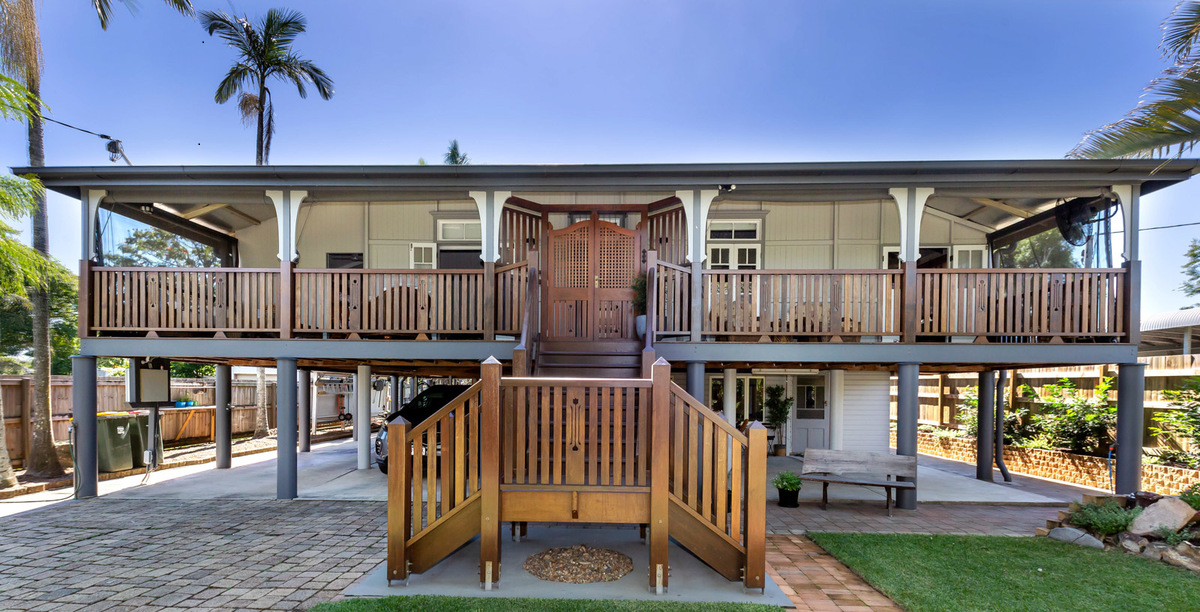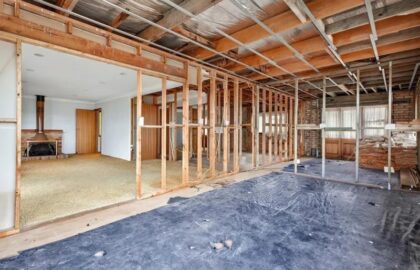
Use the term “Queenslander” in relation to housing styles and it immediately conjures a vision of a large sprawling timber structure on stumps with an extensive, deep, shaded verandah. Developed in the 1840s in the hopes of combatting the summer heat they are usually high-set, single storey dwellings with the characteristic verandah. Long hot summer days that often ended with a torrential downpour required a house with wide verandahs to provide shelter from these conditions. The importance of the verandahs as an architectural element in a tropical Australian house cannot be underestimated because it is one area which lent itself to an informal semi-outdoor lifestyle suited to the climate. The verandah became an integral part of every house and their use an essential part of the Australian way of life. The cool space framed with white posts, decorative balustrades and brackets became a symbol of the tropical house as an essential link between the indoors and the outdoors.
The raising of the main living spaces off the ground can be seen as both a stylistic and practical device. The vertical “stumps”, initially of timber, allow the building to “float” above the terrain. “Queenslanders” all have this underfloor area that is used to cool the building through ventilation and also for protection of the main structure from termite attack and other pests. The stumps also help to overcome any variations in the terrain that would normally require earthworks to flatten for construction and allow for the natural flow of water across the terrain in the event of excessive rain and downpours.
The term has evolved to apply to many different types of structures found in suburban Queensland. The many and varied styles all share similar features such as prominent exterior staircases, gabled roofs, and the defining trait of being built on stumps, raising the structure from the traditional 2.8 m and varying in height depending on terrain.
The “Queenslander” is an important part of Australia’s cultural heritage. Many of these houses were built during the latter half of the nineteenth and early twentieth centuries but they seem to have survived remarkably well. There must be a reason for this!








